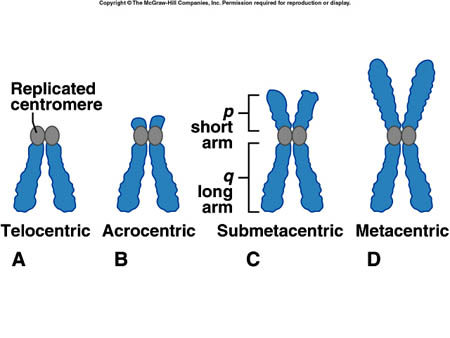Chromosome
A chromosome is the name given to the structure that holds an organisms DNA, either all or just part of it. Both plant and animal chromosomes become visible when mitosis or meiosis occur, they become much more condensed.
In most cases bacterial chromosomes are often circular and not linear, as found in humans [1].
Backround
The parallel between the properties of chromosomes and those of genes is evidence that genes are located on chromosomes:2
1. Genes come in pairs; chromosomes come in pairs
2. Alleles of a gene segregate; homologous chromosomes segregate
3. Unlinked genes undergo independent assortment; nonhomologous chromosomes undergo independent assortment
Theodor Boveri gave the definitive difinition that genetic material is held on chromosomes after a series of experiments in the mid 1880s.3
Structure of Chromosome:
1. Each chromosome compose of two identical sister chromatids.

2. The sister chromatids are hold on the centromere. Centromere in the human chromosome doesn't have any distinct sequence, it is just a large array of repeated sequence.
The position of centromere determine the type of chromosome.
3. At the end of each chromosome also contain telomere, that is used to protect the chromosome from annealing with sister chromatids.
Also is used to distinguish the real end of chromosome from the end of chromosome caused by damaged; in addition, it is also used to solve end replication problem.
References
- ↑ Molecular Biolody of the cell fifth edition, 2008
2. Hartl D L., Ruvolo (2011), Genetics: Analysis od Genes and Genomes, 8th edition, London: Jones & Bartlett Learning
3. DNA from the Beginning - An animated primer of 75 experiments that made modern genetics (2002-2010), DNA Learning Centre. Available at: http://www.dnaftb.org/8/bio.html
